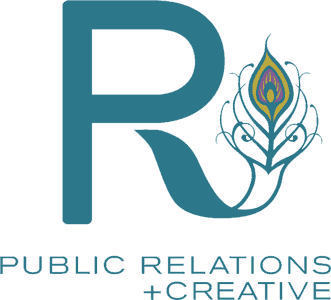R Public Relations Firm
4 Effective Ways to Improve Your PR Team’s Productivity
The fast-paced nature of public relations, coupled with multiple variables to consider, often leads to stress and reduced employee productivity. Besides the everyday demands of the PR role, other factors like inefficient processes, employee dissatisfaction, and poor communication can lower a PR team's productivity. Ultimately, this results in poor PR campaign performance and revenue loss.
Having built a PR agency with over a decade of deploying effective campaigns, a vital place to start building a productive team is setting clear goals. However, that's just a tiny part of the process. This article will explore four practical tips to help improve your PR team's productivity, why it's important, and the elements of a productive PR team.
Why Productive PR Teams Are Essential for Growth
PR teams play a crucial role in the growth process of any business. They are at the forefront of building a good reputation and awareness for your brand using different creative assets. The role of PR teams requires creativity and focus at all times. However, if a team is unproductive, it's unlikely to deliver fully innovative solutions consistently, thus limiting the potential impact of public relations on your business.
Building a productive PR team contributes to happy employees who are proud of their achievements and eager to deliver fast results. In the long run, you will experience better PR campaign performance, save costs on fixing avoidable mistakes, and improve your internal company culture.
What Are the Critical Elements of Productive PR Teams?
Improving your PR team's productivity is a function of multiple elements. Some key features businesses with a productive PR team may have in common include:
- Clear goals and objectives
- Clearly defined roles and responsibilities
- Effective communication processes
- Ability to track results
- Healthy collaboration practices
- Adopting technology to automate routine tasks
- A healthy work culture
What Are Four Effective Ways to Improve Your PR Team’s Productivity?
Low team productivity usually results from different factors that activate stressors in team members. If you are building a PR team from scratch, starting on the right note is essential. On the other hand, if your team has lost its steam, it's time to reevaluate your processes. Here is a list of four practical steps to improve your PR team's productivity.
1. Set SMART Goals and Objectives

The low productivity in PR teams often results from a lack of focus and direction. When your PR team works on everything and nothing simultaneously without clear milestones, it can lead to burnout. Setting SMART goals helps to direct focus on the right PR activities. It will also help your PR team members to identify where their skills will be most helpful in contributing creative ideas. Subsequently, this will improve team collaboration, foster better engagement, and boost PR productivity.
2. Streamline Workflow Processes with Clearly Defined Roles and Responsibilities

According to a Gallup article, unclear roles are one of the leading causes of employee burnout, resulting in low productivity. When your PR team doesn't have clearly defined roles, you miss out on a chance to maximize the full potential of each employee. It also affects project delivery efficiency, resulting in longer revision periods and disorganized workflows. To create clear roles, you must first understand the strengths and weaknesses of each PR team member. Then based on your PR activities, you can identify where they will best fit before assigning specific tasks to each member. This process will allow PR teams to focus on completing assigned tasks, identifying support tools they need, and improving their creativity rather than juggling unrelated tasks.
3. Leverage Technology for Automation
Technology and automation have come a long way, with PR tools reaping the benefits of these innovations. Often, routine tasks that could be automated end up consuming time and causing low productivity. With PR tools like Cision, BuzzSumo, and Google Analytics, PR teams can streamline analytics, report generation, and other tasks. You can save up to 40% of time lost to task switching when you automate repeat tasks and adopt technology for other complex activities.
4. Implement a Rewards and Incentives Program

For a PR team to be productive, you must have good levels of employee engagement. Unfortunately, recent studies have shown that employee engagement has declined, with only 32% of part- and full-time employees actively engaged in their organizations. This results from poor team recognition and achievement rewards, amongst others. Adopting a rewards and incentives system will allow you to recognize your PR team's achievements. With the possibility of increasing productivity by 14%, adopting an incentive program for the PR team is a win-win.
Getting Started with Building PR Productivity
Productivity is one of the cornerstones of successful teams and business growth. A PR team’s critical role in improving brand awareness, maintaining reputation, and supporting marketing performance makes it an important element to prioritize. If your team isn't performing at high capacity, it might be a case of burnout or poor employee engagement.
Boosting your PR team's productivity isn't just about improving performance—it's about fostering a workplace culture that values creativity, efficiency, and dedication. Start transforming your PR team today and see the difference it makes to your brand's reputation and growth. Need expert advice? Schedule a call with our professional PR consultants, and let's transform your PR productivity together.









